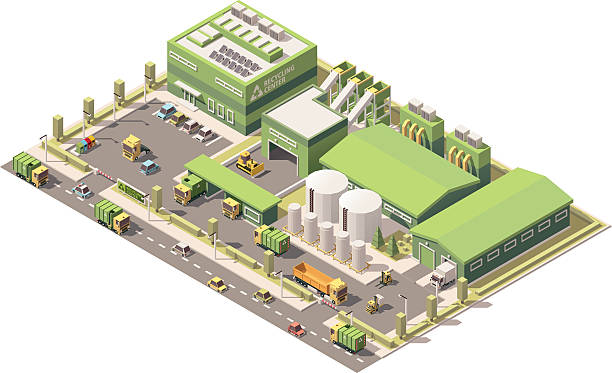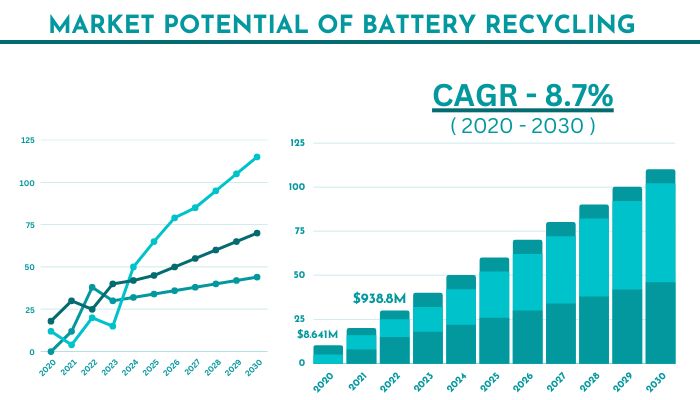Project Report For Battery Recycling plant
Introduction
Project report for Battery Recycling Plant is as follows.
The recovery of high-value anode metals cobalt and lithium is the primary focus of lithium-ion battery recycling line research. Copper in the negative electrode of waste lithium batteries is an essential and frequently utilised industrial raw material. Toner can be used as an additive in materials such as plastic and rubber. To accomplish effective separation and recovery of waste lithium batteries, an environmentally friendly physical separation technique is used based on the structural features of lithium batteries.
The lithium battery recycling manufacturing line is used to disassemble and recycle soft package batteries, smart phone batteries, surgery batteries, cylindrical batteries, and other types of batteries. Graphite powder, lithium cobalt oxide, aluminium, and copper are the end products.
The company’s waste lithium-ion battery recycling and processing equipment will smash the materials step by step using shredders, crushers, and grinders, and will separate them using air separation facilities. To limit dust pollution, the whole set of equipment uses a closed negative pressure system, and pulse dust collecting facilities capture dust formed during the separation process and subsequent operations.
![]()

Benefits Of Battery Recycling Plant
Batteries contain harmful chemicals: This is likely the most significant reason we should think about recycling our old batteries. Batteries contain toxic substances that can endanger human health, especially when left around the house, since some of these toxins can stay in the air you breathe! The acids and heavy metals used in batteries also imply that poisons can damage animals and contaminate water supplies if they leak into soil as a result of being disposed of in landfill.
Recover non-renewable materials: Raw materials are mined, processed, transformed into batteries, and finally discarded in the manufacture of batteries. These materials include, to name a few, lead, nickel, steel, zinc, mercury, cobalt, lithium, and silver – and while they are not renewable, they are infinitely recyclable – and by not properly recycling them, these materials are no longer available for use, negatively impacting the economy.
Reduce cost of new batteries: due to on from the previous point, by recycling our waste batteries and recovering and reusing the resources, we can directly ensure that they are used for forward manufacture, lowering production costs and ensuring that competitively priced products are available for purchase.
Reduce risk of fire & explosion: Battery explosions and fires are uncommon in comparison to the large quantity of batteries in use. They can, however, occur, and fires at waste facilities can be extremely difficult to extinguish. Some batteries are more susceptible to catching fire than others, but all batteries must be treated with care, especially if they are damaged or exposed to heat, and appropriate storage and handling can reduce the danger of a fire or explosion.
Market Potential Battery Recycling Plant
The global battery recycling market is predicted to develop at a compound annual growth rate (CAGR) of 37.7% from 2023 to 2030, with a value of USD 1.38 billion in 2022.
Rising expenditures in electric car research and incentives to promote battery recycling are likely to boost market expansion in the future years. The usage of lithium-ion batteries is expanding as a consequence of numerous variables such as energy efficiency, pollution reduction, and customer acceptance.

Other reasons contributing to the adoption of electric cars include the development of better battery technology and the low maintenance requirements for these lithium-ion batteries. As a consequence of the increasing use of lithium-ion batteries, it is expected that the market for lithium-ion battery recycling would continue to rise.
The market for recycling lithium-ion batteries globally was dominated by the industrial sector in 2021, accounting for the second-largest non-automotive share. Concerns about the environment and resource depletion have prompted the recycling of wasted lithium-ion batteries. Recycling lithium-ion batteries provides economic benefits such as reduced reliance on nations with lithium and copper deposits for raw material supply.
Project Report Sample On Battery Recycling Plant
Need Help?
Create 100% Bankable Project Report
